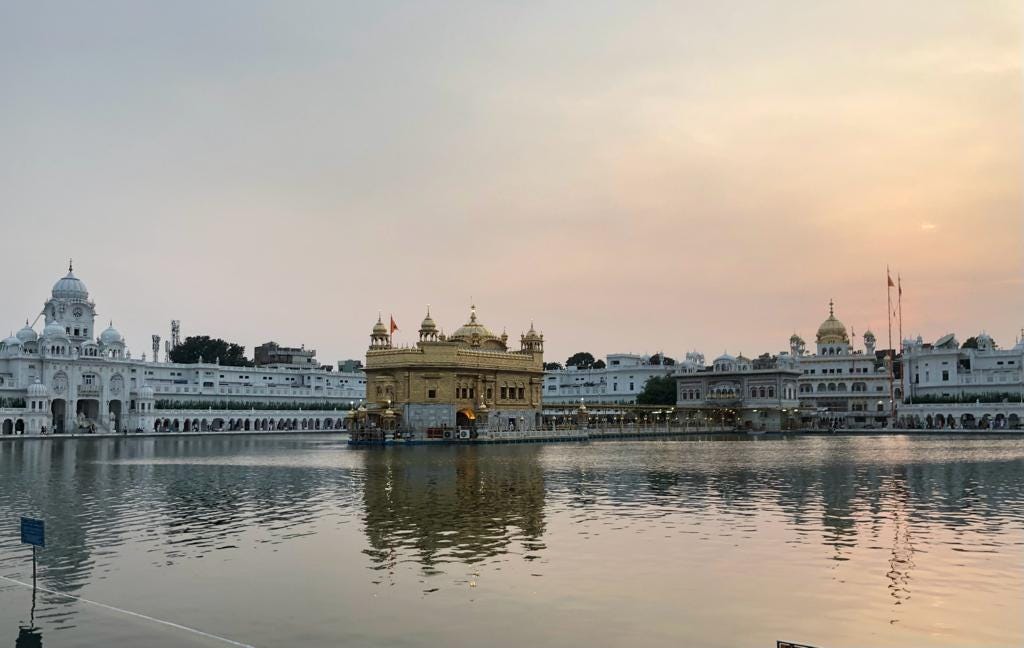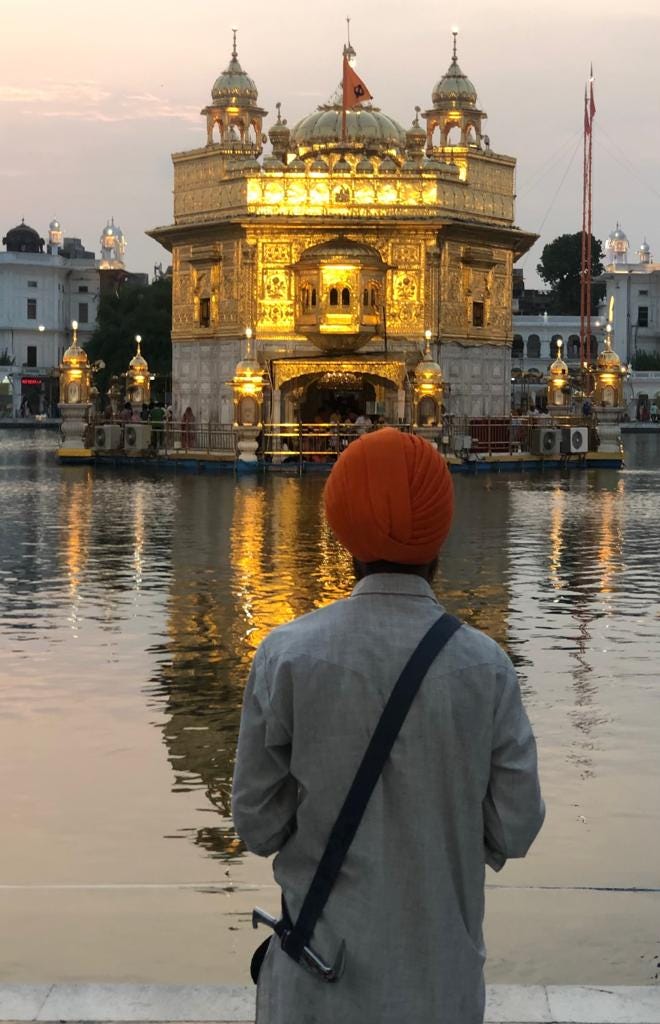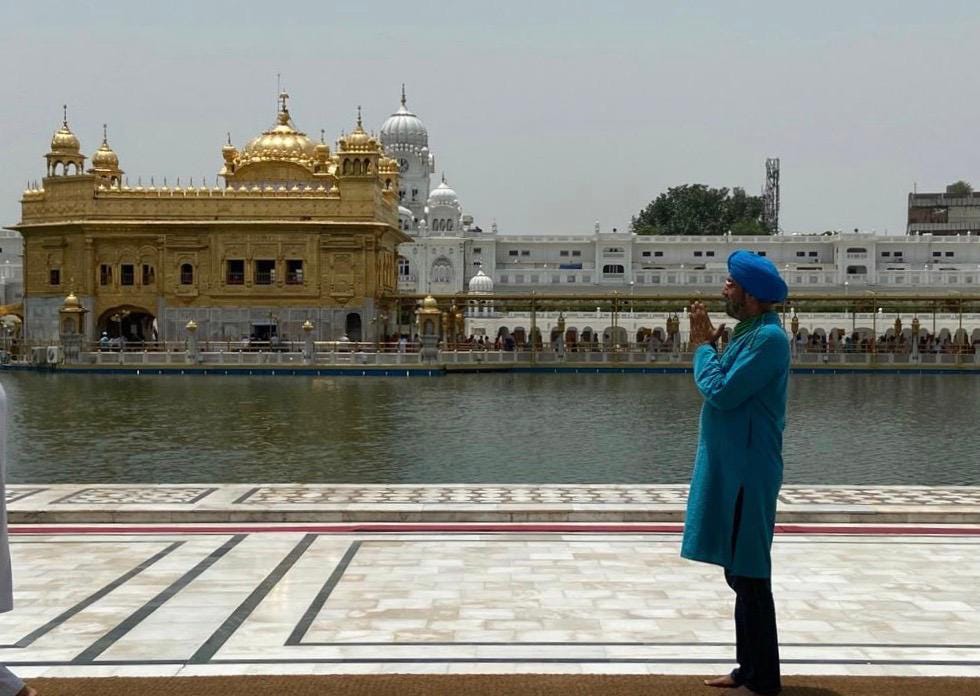Anointment of the New Jathedar at Anandpur Sahib: Questions of Legality, Propriety, and Procedure
Hopes now rest on the Panthic Sammelan convened on 14 March, coinciding with the colourful festival of Hola Mohalla at Anandpur Sahib, where Sikh organisations will deliberate on the path forward.
Introduction: A Controversial Transition
The removal of Giani Raghbir Singh and Giani Sultan Singh as Jathedars of Sri Akal Takht Sahib and Takht Sri Kesgarh Sahib has stirred controversy within Sikh circles, within Punjab and beyond. While the Shiromani Gurdwara Parbandhak Committee (SGPC) holds legal authority under the Sikh Gurdwaras Act, 1925, the abrupt manner of their dismissal has drawn significant criticism. The appointment of Giani Kuldeep Singh Gargaj, conducted in the early hours of 10 March, has been particularly contentious. Giani Raghbir Singh, now reverted back to his position as Head Granthi of Sri Darbar Sahib, Amritsar, has voiced serious objections, citing flagrant breach of well established maryada (religious protocol) and universally accepted customary practices and traditions.
The Jathedar Transition and Procedural Breaches
Removal and Institutional Upheaval
The Executive Committee of the SGPC summarily and unceremoniously removed Giani Raghbir Singh as Sri Akal Takht Jathedar and Giani Sultan Singh as Jathedar of Takht Sri Kesgarh Sahib on 7 March 2025, citing "inadequate leadership." This followed the earlier dismissal of Jathedar Giani Harpreet Singh after a departmental inquiry that upheld dubious and flimsy charges of moral turpitude, signalling a broader institutional reshuffle. The SGPC, whose moral authority and legitimacy to govern historic Sikh Gurdwaras are increasingly questioned, given that its last election was held in 2011, appointed Giani Kuldeep Singh Gargaj as Jathedar of Takht Kesgarh Sahib, Anandpur Sahib, while also granting him additional charge of Sri Akal Takht, Amritsar.
Opposition and Unconventional Appointment
Nihang groups, led by the Budha Dal and the Damdami Taksal, strongly opposed Gargaj’s appointment, alleging it violated long-standing traditions. On the evening before the ceremony, they issued a stern warning, declaring their intent to peacefully resist the new Jathedar if he attempted to assume his duties at Anandpur Sahib. Anticipating resistance, the SGPC conducted the installation ceremony at 2:30 AM on 10 March, circumventing both public scrutiny and the risk of physical confrontation.
Giani Raghbir Singh’s Critique of Ceremonial Breaches
Deviations from Maryada
Giani Raghbir Singh, addressing mediapersons, highlighted procedural deviations from the solemn Sikh maryada, asserting that the Head Granthi of the Golden Temple, Amritsar must preside over the dastarbandi (turban-tying) ceremony or delegate a representative. Neither he nor Giani Sultan Singh attended, thus violating the established norms.
Violation of Religious Protocols
The installation took place before the parkash (ritual opening) of Guru Granth Sahib at 4:15 AM, rendering the ceremony irregular, if not incomplete. Traditionally, the process involves:
Announcements and invitations to Sikh organisations and sampradayas, who would present their own shawls etc. in the honour of the new Jathedar, after the dastarbandi.
Many a time the President of the Shiromani Akali Dal would also be present to honour the new appointee.
Kirtan (devotional singing) and gurmat samagams (Sikh congregations) in Guru Granth Sahib’s presence.
Formal ardas (prayer) and hukamnama (edict) from Sri Guru Granth Sahib.
Distribution of kadah prasad, commencing with the Panj Pyaras.
These steps were totally ignored, raising concerns about transparency and adherence to tradition.
Institutional Erosion
Giani Raghbir Singh described these breaches as part of a broader erosion of Sikh institutions. His concerns echo those of Giani Harpreet Singh, who labelled the dismissals a "black day" for the Panth. Both argue that political motivations, rather than religious consensus, are driving decisions, endangering the broader Sikh panthic unity.
Political and Panthic Reactions
Internal Divisions in Shiromani Akali Dal (SAD)
The reshuffle has further deepened divisions within the SAD. Leaders such as Bikram Singh Majithia and Manpreet Ayali have criticised the dismissals, calling them a "mistake" that undermines Panthic solidarity. While rebel leaders stopped short of directly accusing the Shiromani Akali Dal or the Badal family of influencing SGPC decisions to suppress intra-party dissent, their criticism was squarely directed at the SGPC’s actions.
Civil Society and Panthic Responses
Sikh intellectuals and organisations, including the Damdami Taksal and Dal Khalsa, condemned the procedural violations. Dal Khalsa announced a protest march from Hoshiarpur to Anandpur Sahib on 13 March. Various scholars and community leaders have called for greater transparency in SGPC's decision-making.
Analysing the Dispute
Historical Precedents and Institutional Autonomy
The Akal Takht Jathedar has historically functioned independently of SGPC control, with appointments requiring consultation with Sikh sampradayas. The institution, created by the sixth Sikh Guru, Sri Guru Hargobind ji, dates back to the year 1606, whereas the British-era Sikh Gurdwaras Act, 1925 came over three centuries later. However, SGPC’s unilateral dismissals signify a shift towards centralised governance. Giani Raghbir Singh’s removal, citing "inconsistent leadership," underscores this increasingly non-democratic trend.
Role of Nihang Groups
The Budha Dal Chief, Baba Balbir Singh, initially took a strong stance and publicly declared that his faction would physically prevent the new Jathedar from assuming duties at Anandpur Sahib. However, after the SGPC rescheduled the ceremony was over, he moderated his response, stating that while his followers would visit the Gurdwara to pay obeisance, he urged them and the public to remain peaceful and respect the maryada of Takht Kesgarh Sahib. This shift in approach helped defuse tensions, though concerns about procedural violations remain as potent as ever.
Key Point of Contention
A key point of contention lies in the distinction between an appointment and an anointment (tajposhi, coronation, figuratively) within Sikh maryada. While the SGPC may have the legal authority to appoint a Jathedar, the anointment—which involves acceptance by the Panth through established religious protocol—was bypassed entirely. The hurried and secretive nature of the installation, conducted at 2:30 AM without the participation of the Head Granthi or traditional Sikh institutions, has deeply unsettled even those who have long stood by Sukhbir Singh Badal. The decision has caused internal fissures within the Shiromani Akali Dal (SAD), with even members of Sukhbir’s own family expressing strong reservations. This rare public dissent from staunch loyalists underscores the gravity of the misstep.
Religio-Political Implications
The crisis comes at a time when the SAD’s Panthic vote bank has already been significantly eroded, reduced to a mere 13% following incidents such as the Bargari sacrilege case. Key leaders have parted ways, and the alienation of the Panthic cadre has left the party struggling for legitimacy. The absence of an Akal Takht-appointed committee’s involvement in the selection process has further deepened the divide. For the first time in history, major Panthic bodies have openly stood against the Jathedar of Sri Akal Takht—a scenario unprecedented even under British or Mughal rule. This collective defiance signals a paradigm shift, with Holla Mohalla poised to become a rallying point for a new narrative, potentially reshaping the future of Sikh political and religious leadership.
Call for a Panthic Sammelan at Anandpur Sahib on Hola Mohalla
Significantly, the Damdami Taksal, under its Chief, Baba Harnam Singh Dhumma, has called for a Panthic Sammelan (convention) at Anandpur Sahib on 14 March 2025, coinciding with the Sikh New Year (1 Chet in the Nanakshahi calendar). This gathering is expected to address concerns over recent developments and discuss the future course of action for Sikh institutions.
It is hoped that the deliberations at this convention, for which invitations have been sent to a broad spectrum of Sikh organisations, will be fruitful and lead to a consensus package of recommendations to uphold the dignity of Sri Akal Takht and its duly appointed Jathedar Sahib. Notably, this sammelan is also likely to further sideline the Sukhbir Badal faction of the Shiromani Akali Dal and the current SGPC management, which is increasingly perceived as the personal fiefdom of the former Deputy Chief Minister.
Looking Forward: Preserving Maryada in a Politicised Landscape
This controversy underscores the deepening conflict between governance and religious orthodoxy within Sikh institutions. While the SGPC claims administrative authority, critics argue that its blatant disregard for maryada has gravely undermined the spiritual legitimacy of the Takhts. The manner in which Sukhbir Singh Badal and his coterie have manipulated historic Sikh institutions for their narrow and parochial political interests has not only eroded trust in the SGPC but has also desecrated long-standing religious traditions. Giani Raghbir Singh’s objections highlight the urgent need for transparent and principled decision-making rooted in Sikh values.
Hopes now rest on the Panthic Sammelan convened on 14 March at Anandpur Sahib, where Sikh organisations will deliberate on the path forward. This gathering presents a crucial opportunity to reclaim the sanctity of Sikh institutions and demand accountability from those who have reduced them to instruments of political control. As Giani Kuldeep Singh Gargaj assumes his dual responsibilities, the Sikh sangat watches closely to see whether the SGPC will embrace reform or deepen existing divisions. Given the widespread disenchantment, holding early elections to the General House of the SGPC—last conducted in 2011—appears to be the most viable path to restoring credibility and ensuring the rightful governance of Sikh religious affairs.




